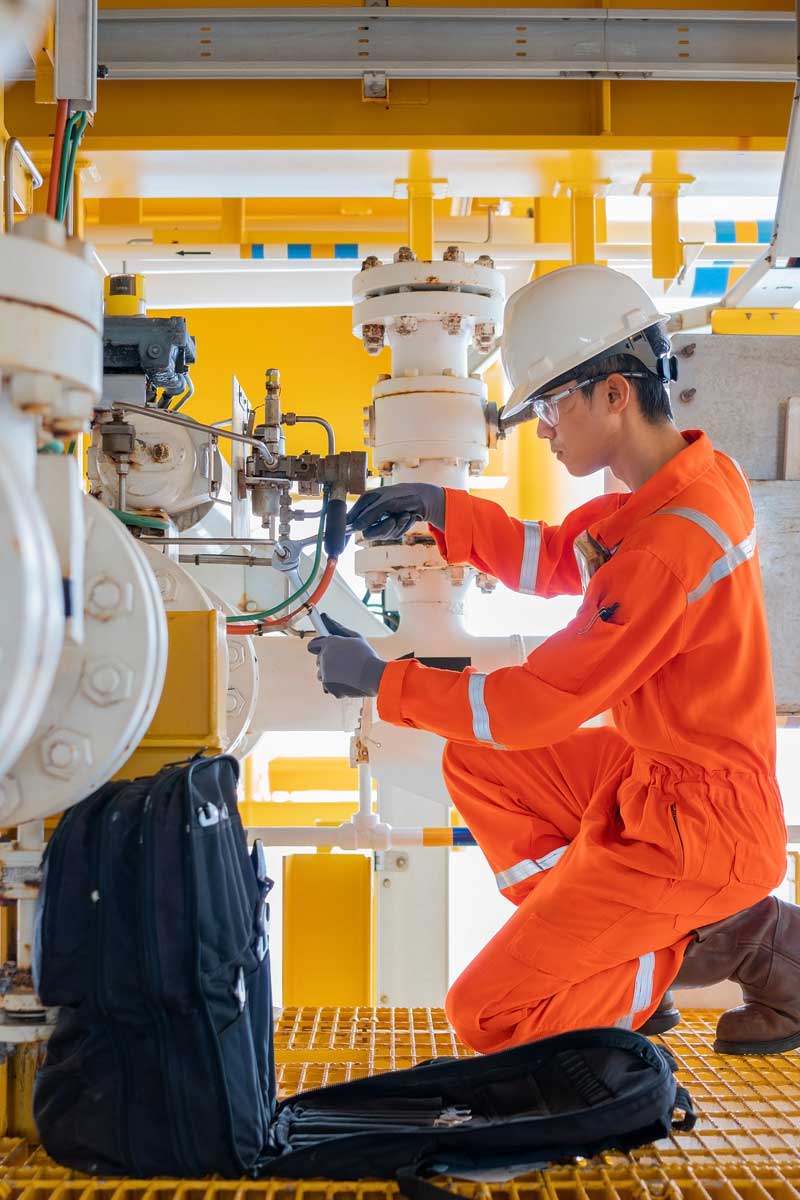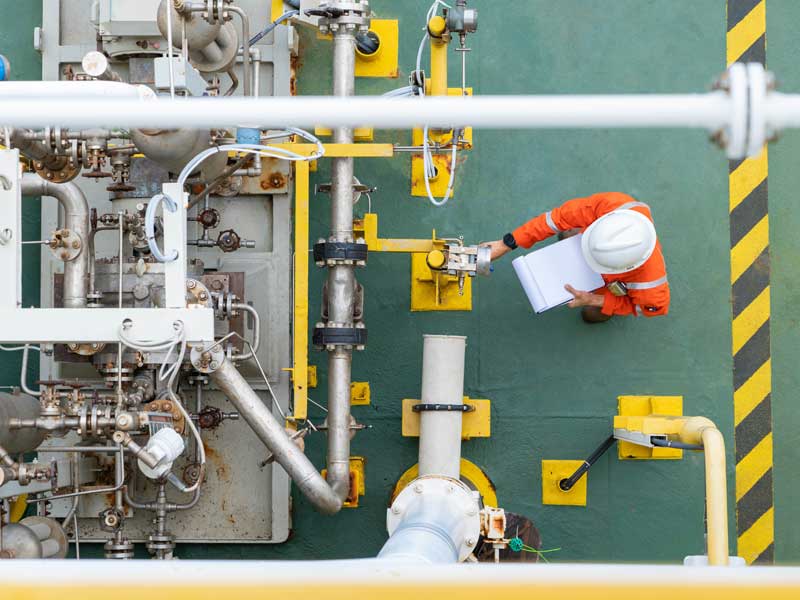What is LDAR?
Leak Detection and Repair (LDAR) is a comprehensive environmental management practice used across various industries to identify and address emissions of hazardous air pollutants and volatile organic compounds (VOCs) from equipment and processes. The primary goal of LDAR is to prevent and mitigate air pollution by promptly detecting and repairing leaks, thereby minimizing the release of harmful substances into the atmosphere.
The LDAR process typically involves several key steps:
-
Identification: Specially trained personnel use various methods and instruments to detect leaks from valves, pumps, connectors, and other equipment components. Common techniques include Method 21 (a handheld device that detects VOC emissions) and Optical Gas Imaging (OGI) (which uses infrared cameras to visualize gas leaks).
-
Monitoring: Equipment subject to LDAR regulations is regularly monitored at specified intervals to determine if it is leaking. Monitoring schedules can be daily, weekly, or monthly, depending on regulatory requirements and the type of equipment.
-
Documentation: Detailed records are kept for each monitored component, including inspection dates, leak detection methods used, leak severity, and repair actions taken.
-
Repair or Replacement: When a leak is detected, prompt action is taken to repair or replace the faulty component within a predetermined timeframe. This might involve tightening connections, replacing seals, or replacing the entire component.
-
Verification: After repairs or replacements, the equipment is rechecked to ensure that the leak has been effectively addressed.
LDAR programs are essential for several reasons:
-
Environmental Protection: LDAR programs reduce emissions of harmful pollutants, protecting air quality and minimizing the environmental impact of industrial processes.
-
Compliance: Regulatory agencies, such as the U.S. Environmental Protection Agency (EPA), require industries to implement LDAR programs to meet specific emissions reduction targets and comply with air quality regulations.
-
Safety: Promptly addressing leaks enhances workplace safety by minimizing exposure to hazardous substances and reducing the risk of fires, explosions, or other safety incidents.
-
Cost Savings: LDAR programs can lead to significant cost savings by reducing product losses, emissions-related fees, and preventing potential regulatory fines and enforcement actions.
In summary, Leak Detection and Repair (LDAR) is a vital environmental practice aimed at identifying and rectifying leaks of hazardous pollutants and VOCs from industrial equipment and processes. It plays a crucial role in safeguarding the environment, ensuring regulatory compliance, enhancing safety, and promoting sustainable industrial practices.

How are emissions from equipment leaks reduced?
A well-implemented Leak Detection and Repair (LDAR) program is instrumental in significantly reducing fugitive emissions, which are unintended releases of pollutants from industrial equipment. LDAR achieves emissions reduction through the following key mechanisms, often involving the use of specialized instruments such as Method 21 (M21):
Early Detection: LDAR programs employ instruments like M21 to swiftly identify and pinpoint leaks at their source. M21, a widely recognized tool in the industry, detects volatile organic compounds (VOCs) by measuring emissions in real-time. Early detection is crucial because it allows for immediate remediation before emissions escalate.
Regular Monitoring: Components subject to LDAR requirements are monitored at specified intervals to ensure that they are not leaking. This periodic monitoring helps identify and address leaks proactively, preventing prolonged emissions.
Prompt Repair or Replacement: When a leak is detected, LDAR mandates swift action to repair or replace the faulty component within a defined timeframe. This prompt response minimizes emissions and prevents the release of pollutants into the atmosphere.
Documentation and Accountability: Detailed records are maintained for each monitored component, including information on inspection dates, M21 readings, and repair actions taken. This documentation ensures accountability and provides a clear record of emissions reduction efforts.
Continuous Improvement: LDAR programs often include ongoing optimization and improvement efforts. This may involve refining monitoring schedules, enhancing repair techniques, and adopting advanced technologies to further reduce emissions.
By effectively implementing LDAR practices, industries can achieve substantial reductions in fugitive emissions. This not only ensures compliance with environmental regulations but also aligns with sustainability goals, promotes cleaner air quality, reduces associated emissions fees, and contributes to overall environmental responsibility. In essence, LDAR programs are a critical component of modern industrial practices that prioritize emissions reduction and environmental stewardship.


Nationwide Service
(251) 308-LDAR (5327)
solutions@ldarbusters.com
